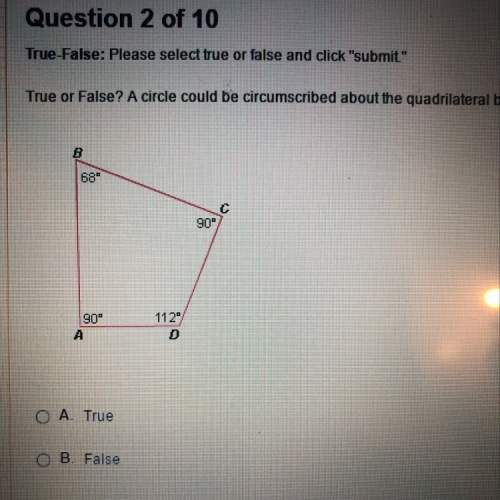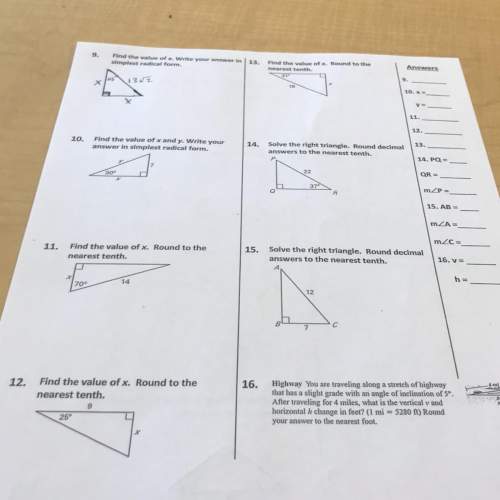
Mathematics, 24.11.2021 14:00 jeffreyaxtell4039
The growth rate of Escherichia coli, a common bacterium found in the human intestine, is proportional to its size. Under ideal laboratory conditions, when this bacterium is grown in a nutrient broth medium, the number of cells in a culture doubles approximately every 30 min.
(a) If the initial population is 20, determine the function Q(t) that expresses the growth of the number of cells of this bacterium as a function of time t (in minutes).
Q(t) =
(b) How long would it take for a colony of 20 cells to increase to a population of 1 million? (Round your answer to the nearest whole number.)
min
(c) If the initial cell population were 200, what is our model?
Q(t) =

Answers: 2
Another question on Mathematics

Mathematics, 21.06.2019 14:30
If given an equation of a line such as -1/2x+6 how would you create an equation of a line parallel and perpendicula to this line that goes through another point such as (4,10)
Answers: 1

Mathematics, 21.06.2019 20:00
Donald has x twenty-dollar bills and 11 ten-dollar bill. how much money does donald have? write your answer as an expression.
Answers: 2

Mathematics, 21.06.2019 20:00
Last one and the bottom answer choice is y=(x-4)^2+1 you guys!
Answers: 1

Mathematics, 21.06.2019 22:20
1. 2. ∠b and ∠y are right angles. 3.? 4.? which two statements are missing in steps 3 and 4? ∠x ≅ ∠c △abc ~ △zyx by the sas similarity theorem. ∠b ≅ ∠y △abc ~ △zyx by the sas similarity theorem. = 2 △abc ~ △zyx by the sss similarity theorem. = 2 △abc ~ △zyx by the sss similarity theorem.
Answers: 2
You know the right answer?
The growth rate of Escherichia coli, a common bacterium found in the human intestine, is proportiona...
Questions

Mathematics, 27.07.2021 08:50


English, 27.07.2021 08:50

Mathematics, 27.07.2021 08:50

Biology, 27.07.2021 08:50

Mathematics, 27.07.2021 08:50

English, 27.07.2021 09:00

Mathematics, 27.07.2021 09:00


Mathematics, 27.07.2021 09:00

Mathematics, 27.07.2021 09:00


Mathematics, 27.07.2021 09:00

Biology, 27.07.2021 09:00


English, 27.07.2021 09:00

Mathematics, 27.07.2021 09:00

Mathematics, 27.07.2021 09:00


Mathematics, 27.07.2021 09:00





